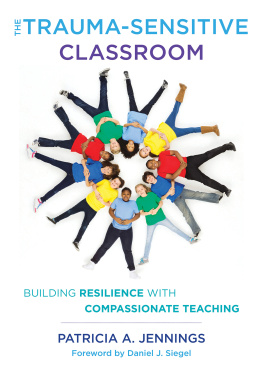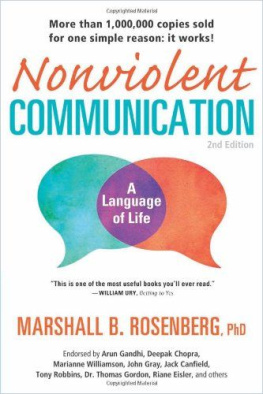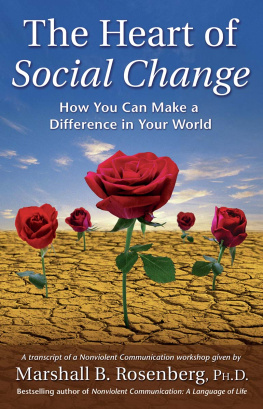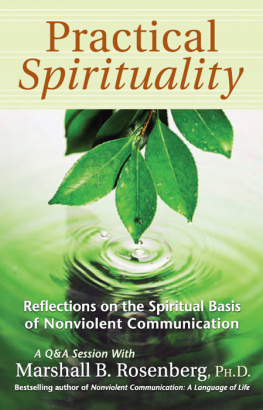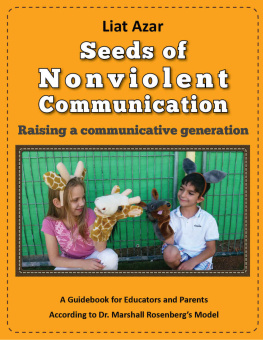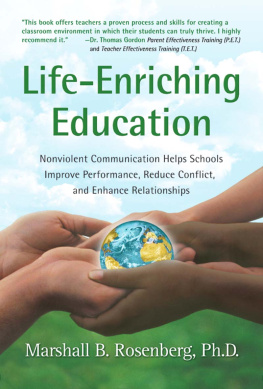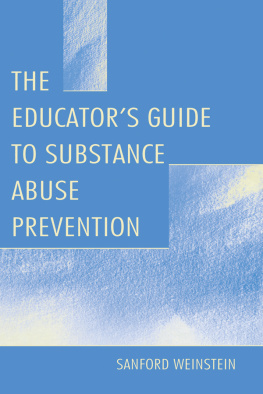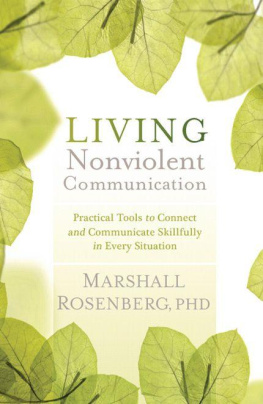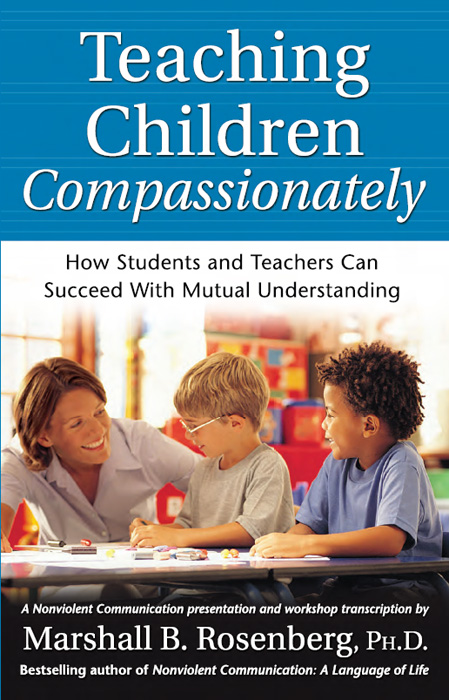P.O. Box 231129, Encinitas, CA 92023-1129
For additional information:
Center for Nonviolent Communication
5600 San Francisco Rd. NE Suite A, Albuquerque, NM 87109
Ph: 505-244-4041 Fax: 505-247-0414 Email:
ISBN: 978-1-892005-11-3
Copyright 2005 PuddleDancer Press
Published by arrangement with the Center for Nonviolent Communication. All rights reserved.
No part of this booklet may be reproduced by any means, nor may it be stored,
transmitted or otherwise copied without permission of the publisher.
Language of the Heart

Introduction
T he following is excerpted from a 1999 Keynote Address to the National Conference of Montessori Educators, given by Marshall Rosenberg in San Diego, California. In it he describes the basic features of Nonviolent Communication (NVC), and offers illustrations of how they might be used in school, at work, and in everyday life. In particular, Marshall describes the language of giraffes and jackals, the vocabulary of feelings and needs, the difference between observation and evaluation and between requests and demands, the role of power, punishment, and the vital skill of Empathic connection.
In many countries, Nonviolent Communication is popularly known as Giraffe Language. Marshall picked the Giraffe, the land animal with the largest heart, as a symbol for NVC, a language that inspires compassion and joyful relationships in all areas of life. As a language that stresses the expression of feelings and needs, NVC invites vulnerability and transforms it into strength.
Marshall often uses a Jackal puppet to represent that part of ourselves that thinks, speaks, or acts in ways that disconnect us from our awareness of our feelings and needs, as well as the feelings and needs of others. Jackal language makes it very hard for a person who uses it to get the connection they want with others, making life much less wonderful than it otherwise could be. The NVC practice is to recognize and befriend Jackals by receiving those less-than-life-enriching thoughts and habits compassionatelyand free from moral judgmentwhile we retrain ourselves to experience life in increasingly more wonderful ways. In this booklet, the word Giraffe is used interchangeably with NVCand may also refer to a practitioner of NVCwhile Jackal refers to thinking and speaking in ways that do not reflect the practices of NVC.
On Jackals and Giraffes
This is a great thrill for me to be here today and share some ideas with you. Im glad to do it to give something back, because Im very grateful for what my children received from Montessori education. They received many gifts. One of the gifts they received was to be exposed at a very young age to other languages. And I dont think its accidental that as a result of that, my oldest son is now head of a language program teaching English as a Second Language in Sao Paulo, Brazil, and my youngest son is now about to get his doctorate in Spanish, and will accompany me next month when we begin a new project in Colombia, as my translator. So its a great joy for me to share with you some things that I hope will contribute to your teaching and your personal lives as well.
Im interested in learning thats motivated by reverence for life, thats motivated by a desire to learn skills, to learn new things that help us to better contribute to our own well-being and the well-being of others.
And what fills me with great sadness is any learning that I see motivated by coercion. By coercion I mean the following: Any student thats learning anything out of a fear of punishment, out of a desire for rewards in the form of grades, to escape guilt or shame, or out of some vague sense of ought or must or should. Learning is too precious, I believe, to be motivated by any of these coercive tactics.
So I have been interested in studying those people that have the ability to influence people to learn, but learning again that is motivated by this reverence for life, and not out of some coercive tactics.
And one of the things that Ive found by studying such people is that they spoke a language that helps people to learn motivated by reverence for life.
As Ive studied people who have this ability, Ive noticed that they spoke a different language than the language that I was educated to speak. And this language that contributes to helping people learn by reverence for life I call, officially, Nonviolent Communication. But for fun and teaching purposes I like calling it Giraffe Language.
Unfortunately, giraffe language is not the language that I was educated to speak. I did not go to Montessori schools. I went to jackal schools. And in jackal schools, as you might guess, the teachers spoke the language of jackal, not the language of giraffe. I hope none of you have ever heard the language of jackal. I wish it were outlawed in all schools throughout the world, but the teachers at the schools I went to spoke jackal.
So let me give you an idea of what a jackal-speaking teacher sounds like. Lets imagine that you are my students and Im the teacher, and I happen to observe one of you doing something thats not in harmony with my values. I see you sitting at your seat, and instead of doing what Im asking the class to do, youre drawing a picture of me with a knife in my back and blood spurting out.
Now, how do I evaluate you if I am a jackal-speaking teacher? Its obvious: Youre emotionally disturbed. This is how jackal-speaking people have been trained to think. When there is a conflict, they think in terms of what is wrong with the person whos behaving in a way that is in conflict with their values.
Or lets say that you dont understand something Ive said. Youre a slow learner. But what if you say some things that I dont understand? Youre rude and socially inappropriate.
What if I speak so rapidly you cant follow me? You have an auditory problem. What if you speak so rapidly I cant follow you? You have an articulation problem.
So you see, jackal education is a very strange experience. Let me give you an example of what happens in jackal schools. Imagine that you are a car salesman. And youre not selling any cars. Well, you fire the customers. That might seem like a strange experience, but in the jackal schools that I went to, thats what happened. This language of jackal was the primary language used. And if you didnt measure up, you were not promoted, not rewarded, and so forth.
So I saw that the language that really helped people to teach in a way that I valued was a very different language from the language that I was educated to speak. And why did I call it giraffe language? Well, giraffes have the largest heart of any land animal. And, as Ill try to show you in our time together this morning, the language of Nonviolent Communication is a language of the heart. It requires knowing how to speak always from your heart, and since giraffes have the largest heart of any land animal, what better name for a language of the heart than giraffe?
Now, let me share with you this language of giraffe, or Nonviolent Communication, and Ill try to show you how it might apply in conflict resolution with students, or with other teachers or parents.
NVC requires us to be continually conscious of the beauty within ourselves and other people. Theres a song Id like to sing for you to help get us in the mood for understanding the mechanics of Nonviolent Communication. I would guess that many of you might already be familiar with this song. It was written by a couple named Red and Kathy Grammer, and some of the Montessori schools Ive been working with lately have been using their music for teaching purposes. But I find that people I work with all around the world like this song. Its a song called, See Me Beautiful.








